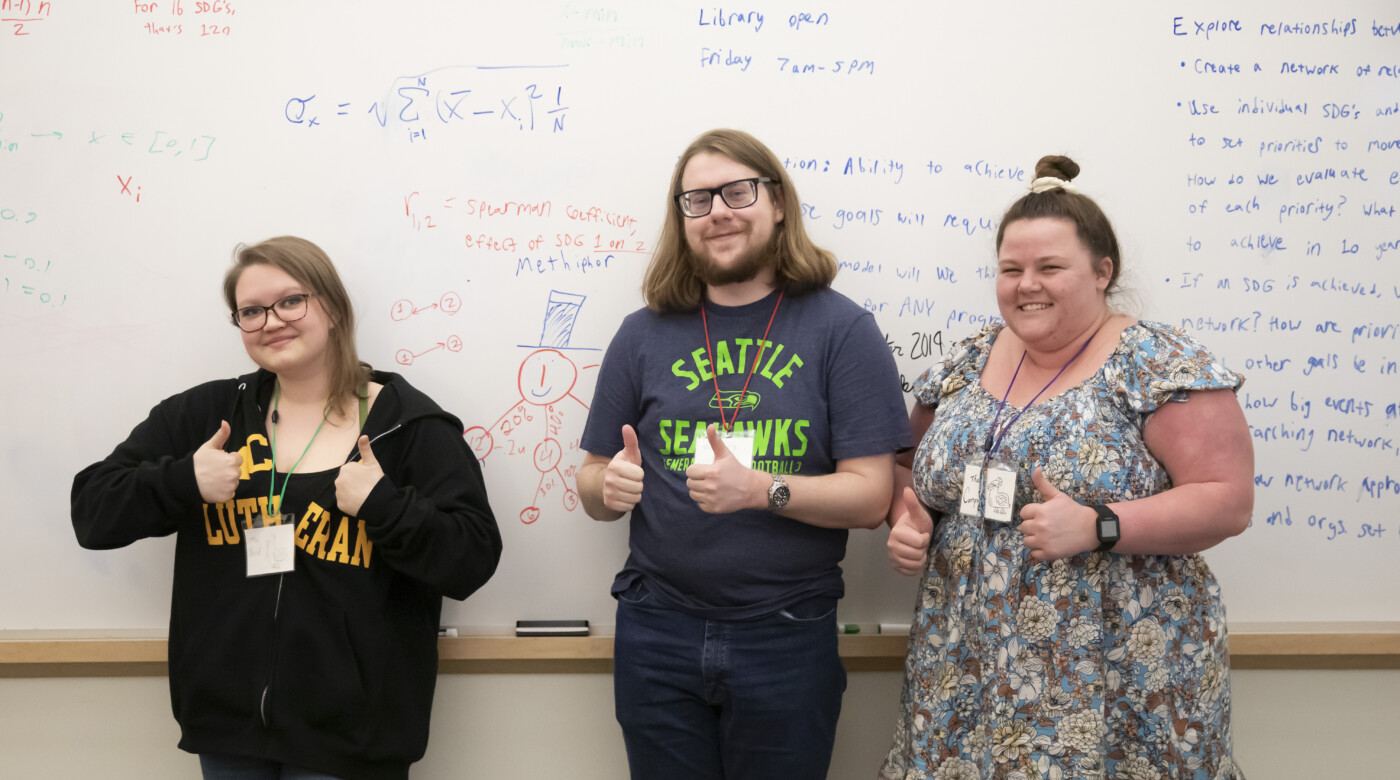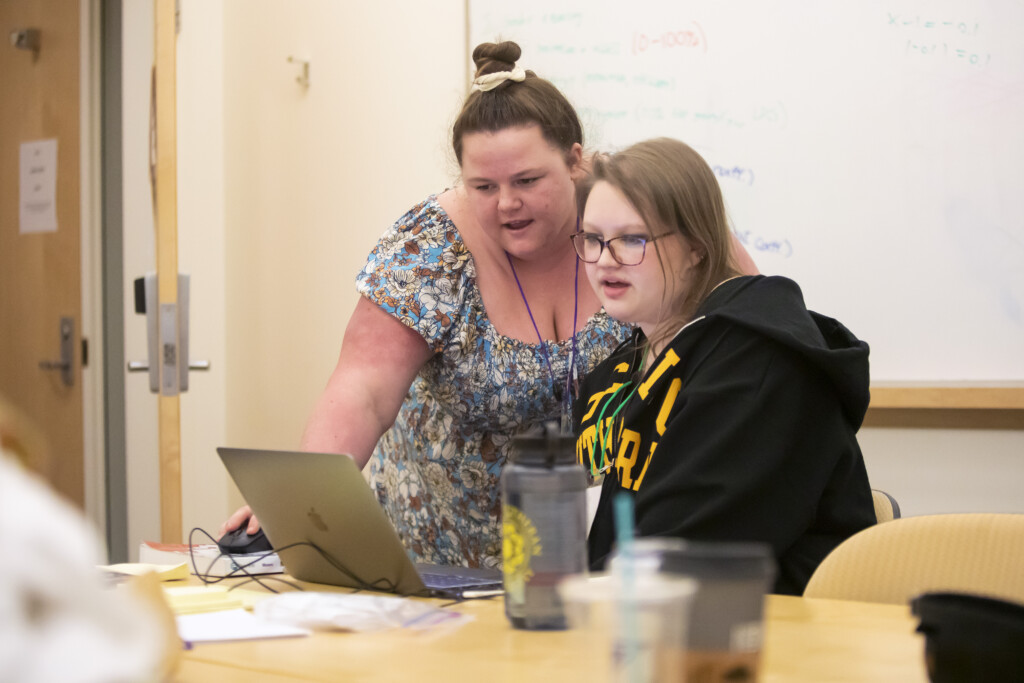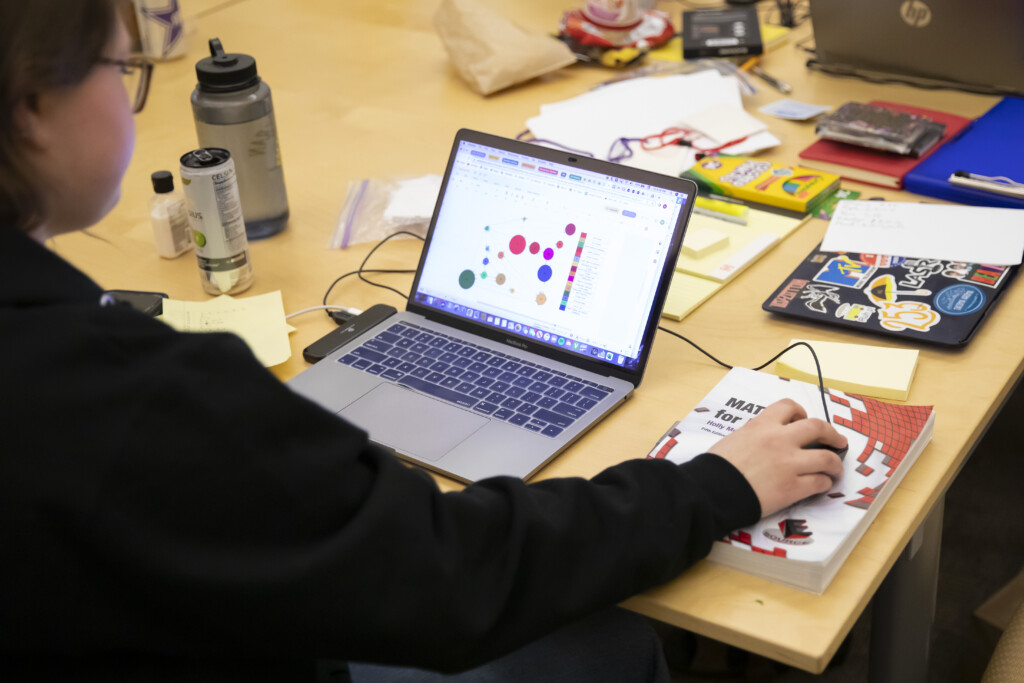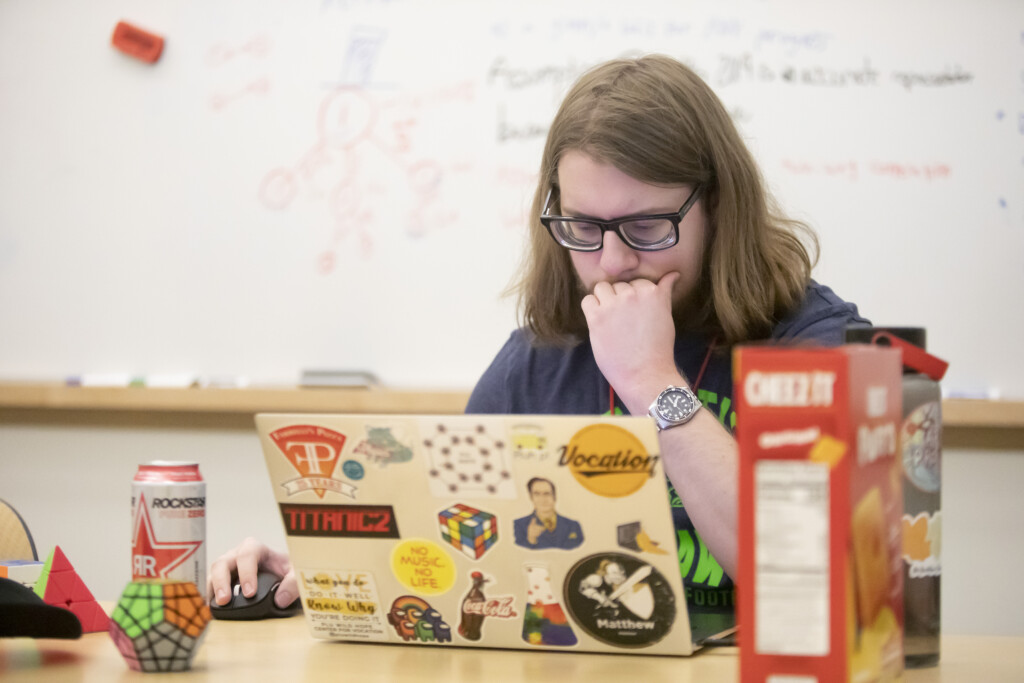PLU students conquer the math modeling marathon!
By Emily Holt, MFA ’16 | PLU Marketing and Communications Guest Writer

Image: Natural Sciences students compete in the Mathematical Contest in Modeling, a competition that goes 24-hours a day from Thursday to Monday (PLU Photo / Sy Bean)
At PLU, you can test your math skills in the classroom, but you can also showcase your problem-solving prowess outside the classroom!
This year, a three-person PLU student team finished in the top five of the Interdisciplinary Contest in Modeling, an international contest where teams of undergrad students have 99 hours straight to create a mathematical model addressing a complex social or scientific issue. The top awards typically go to large technical schools, often in China. But this year, PLU’s team finished in the top 5!
Duffy Anderson ’24, Matthew Helmer ’24 and Madeline Rue ’25 were one of 1,057 teams to tackle Problem D, which required teams to analyze the effects of technological advancements, natural disasters and international crises on UN Sustainability Development Goals and to illustrate how progress on one goal might influence the others.
Their innovative solution—explained in a 23-page pulled together on the last day of the competition and summarized, “Network of goals; a forest of numbers; an ONION.; and in the end, poverty was the root of the problem”—earned them a top award from the Mathematical Association of America.
Beyond being intellectually intense, the competition is also physically grueling; students usually sleep no more than three hours a night. Despite frequent team runs to Bigfoot Java, Duffy, a third-year computer science major, got sleep paralysis twice in 24 hours.
Yet the stress and the fun go hand in hand. Madeline, a second-year physics major, particularly loved waiting for the problems to open and for the timer to go off.
“And then it’s just violent brainstorming,” she added. “Every single room has eight whiteboards, and everyone is just spewing ideas. It is the most chaotic and one of the most creative times.”
Duffy, Madeline and Matthew competed in 2022 as well, solving a problem on asteroid mining, an experience which set them up to assist associate professor of mathematics Mei Zhu in running the workshop that prepares students for the annual competition in February.



Zhu has taught the J-term class on overload for almost twenty years. Before PLU had a BS in Applied Mathematics, it was one of the few opportunities for students interested in applying math skills to real-world problems. Each year she covers the modeling process and techniques, then asks students what they’re interested in. “It’s an ocean of knowledge,” she said. “You can pretty much model anything.”
In her own research, Zhu uses math to understand underlying mechanisms in developmental biology, such as pattern formations in butterflies, the kind of unexpected application that opens students’ minds to possible connections—not only between math, physics and computer science, but also the life sciences and humanities, connections encouraged by the interdisciplinary arm of the contest.
The Consortium for Mathematics and its Applications also hosts the Mathematical Contest in Modeling (MCM)—the “pure math” side of the competition. This year the simultaneous contests drew 20,000 teams and played out at thousands of locations across twenty-one countries. At PLU, the ultramarathon-style drama unfolds in the Morken Center for Learning and Technology, where, this year Duffy, Madeline and Matthew listened to the Vines for six hours straight and danced through the halls into the wee hours of the morning.
A pivotal moment came early on the third day. After drawing up blueprints for an algorithm—which Matthew said they “lovingly” called the Optimal Node Interconnected Objectives Network, or ONION for short—they waited and watched as the code they had staked their entire paper on refused to run. They put sad music on and took a nap. When they woke, they realized they had enough evidence to continue their analysis without it and proceeded into the final sprint—finishing their paper.
Though the students pretty much collapsed after turning in their paper, for Matthew, participating was “one of the best decisions” he’s ever made.
“We worked hard, and we didn’t stop unless we absolutely had to. I can’t wait to do the competition again,” Duffy said. “To sing in the foyer of Morken at two in the morning, to drink enough caffeine to kill a horse and to thrive in an environment where participation and working hard is enough—where you put in the work for nothing but your own self-fulfillment.”



Social Media